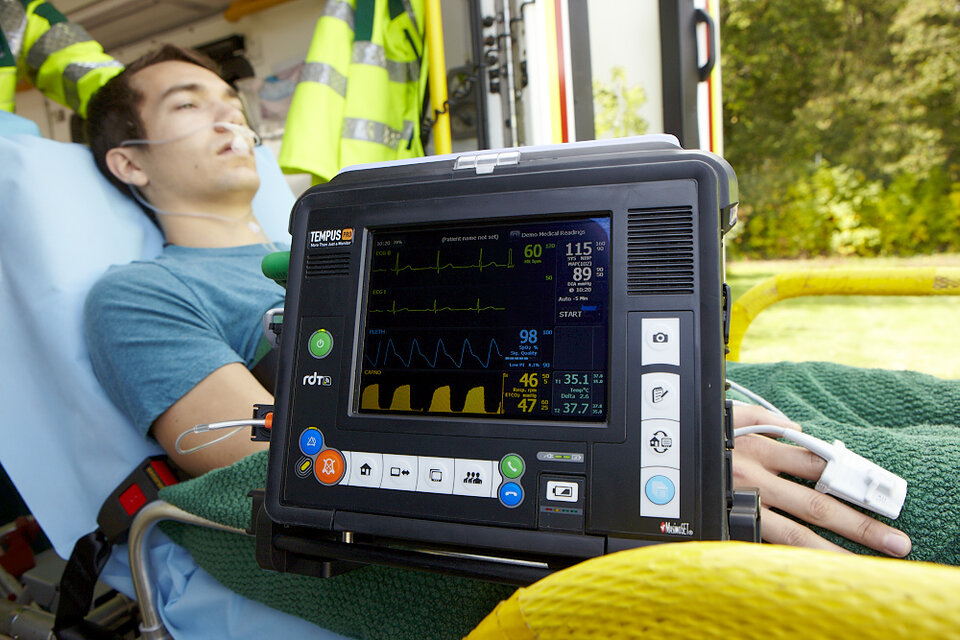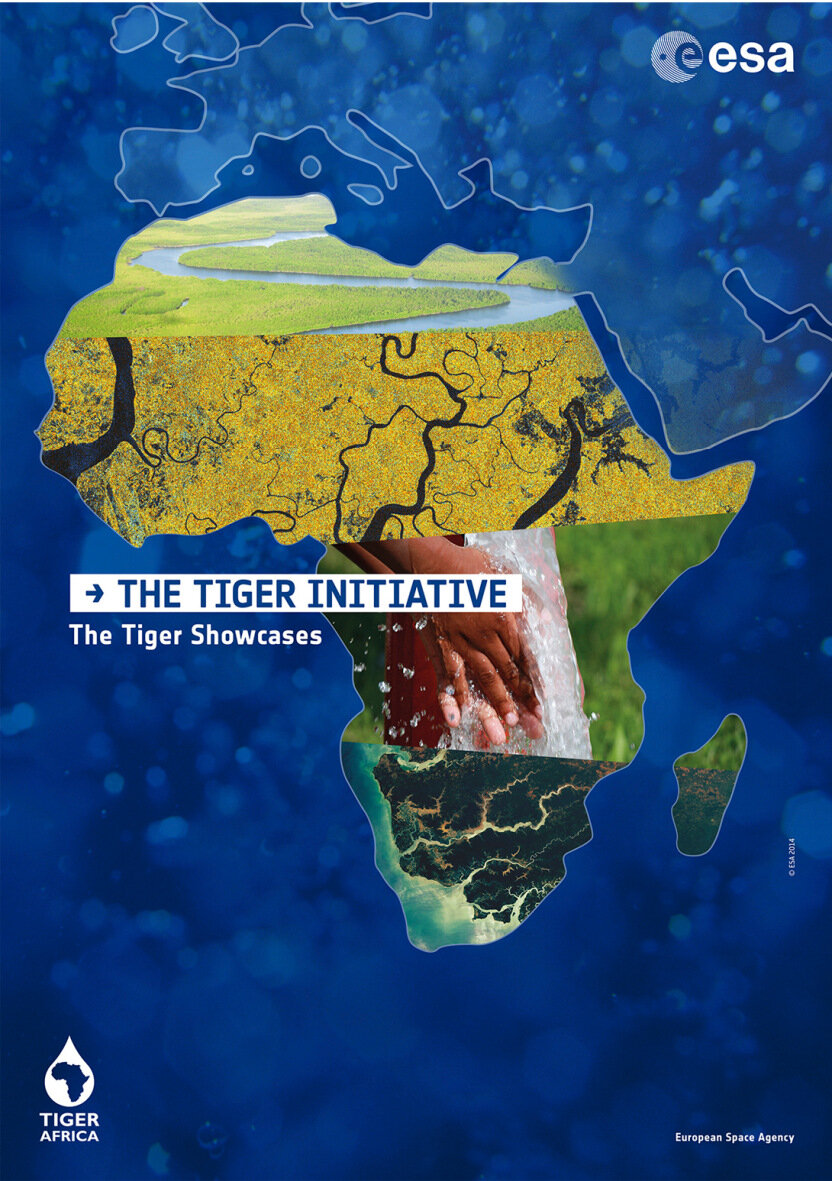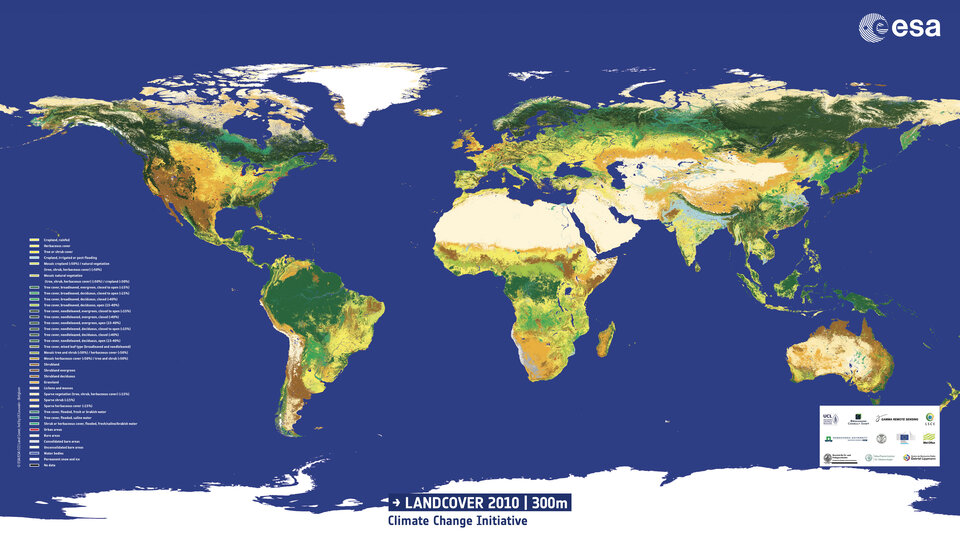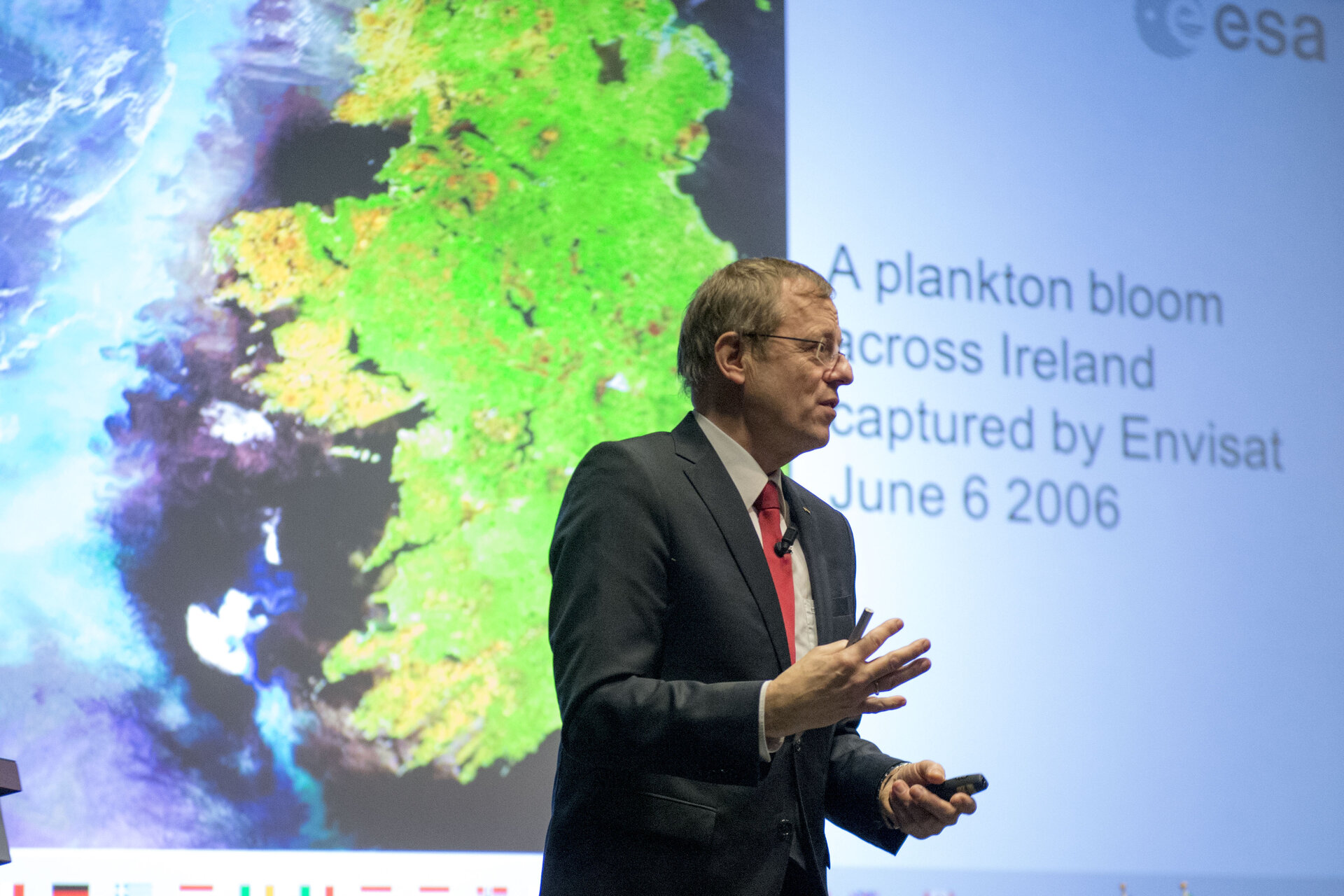Sustainable development with a little help from space
What do space and the Sustainable Development Goals (SDGs) have in common? This question was answered by ESA's DG, Jan Woerner, in a blog on the OECD Development Centre page.
Sustainable development concerns all of us. Since its creation in 1975, the European Space Agency (ESA) has developed a wide range of space programmes that provide useful contributions for sustainable development.
With the 2015 adoption of the SDGs the role of space technology has become increasingly clear. Consider just a few examples related to some of the 17 SDGs:
SDG 1 and SDG 2 call for no poverty and zero hunger. Two topics that are related and ones where space technology can play an important role. Managing the health of livestock, supporting development banks and monitoring the use of land are just a few examples of the extensive projects that are run or co-founded by ESA. For instance, the VGTropics project entails an information system that manages animal health data in data-sparse environments, such as developing countries in Africa. This information system relies heavily on the use of GPS units, satellite-based telecommunication services and satellite-Earth observation. The commercialisation of VGTropics started at the end of 2015.

SDG 3 promotes good health and well-being. Health-related topics that are supported by ESA include Tele-medicine using satellite communication, the mapping of mosquitos to prevent malaria or Zika outbreaks and the assessment of the risk of an epidemic using satellite monitoring. Part of this has been fighting the Ebola epidemic. During the Ebola crisis, ESA supported laboratories by providing them with satellite data thanks to an inflatable satellite antenna.
The so-called B-Life system, developed within ESA’s ARTES Integrated Applications Promotions programme, was used to support an Ebola treatment centre in a remote area of Guinea. As such, information could be relayed between the team on the ground and a hospital in Belgium to allow for up-to-date treatment plans.
SDG 4 focuses on quality education. Rural schools in South Africa and Italy are being supported through satellite-enabled links. ESA's Satellite Way for Education (Sway4edu2) programme guarantees Internet access for such schools, which have been equipped with satellite terminals and other required materials. Internet-based eLearning for teachers and students fosters cultural integration among schoolchildren, boosts language learning and raises environmental awareness thanks to specific courses on local wildlife heritage and sustainable approaches to daily living. ESA has a dedicated Education Office that provides teacher support and training and interesting activities for children, as well as hand-on projects for students.

SDG 6 supports clean water and sanitation. In 2002, ESA worked with UNESCO to launch the TIGER initiative to use Earth observation (EO) technology for improved integrated water resources management in Africa. Effective and sustainable water resources management is supported by EO technology.
Guided by its own international Steering Committee, TIGER received the endorsement of the African Ministerial Council on Water. Now, the TIGER initiative aims particularly at supporting capacity-building activities and development projects in some 42 African countries.
Delegates from 19 African and 10 European countries participated in TIGER’s 2016 workshop held in Addis Ababa.
SDG 13 to SDG 15 focus on life on land, life under water and climate action. ESA's research on the Arctic and Antarctic has brought about extensive knowledge on changing ice sheets and the effect of atmospheric composition on the climate. Through its earth observation programme ESA has been able to play a pivotal role in monitoring Earth's well being from its oceans to its land cover and atmosphere. Sustainable fishing can for instance be supported by tracking animals with satellites, as well as fishing vessels. Land use changes can be detected by satellites to monitor deforestation, which can lead to desertification.

An ESA supported activity with Irish-based company Treemetrics called SATFORM 3D has developed an innovative system that maps forests and monitors tree-harvesting machinery. As such the areas most suited for harvesting can be detected and the health of the forest as a whole can be monitored. Several land cover projects have also been set up under the ESA umbrella that allow to map urban areas, water bodies, as well as tracking biodiversity.
By working alongside those who are implementing measures and assessing progress towards the SDGs we are continually trying to improve our contribution and support to sustainable development. As a responsible international organisation, ESA technology is used for the benefit of all people. Tackling societal challenges is one of our priorities. Further awareness of the potential of our programmes, be they related to Earth observation, satellite telecommunications, navigation, human spaceflight or technology, is needed to help accomplish the SDGs.















 Germany
Germany
 Austria
Austria
 Belgium
Belgium
 Denmark
Denmark
 Spain
Spain
 Estonia
Estonia
 Finland
Finland
 France
France
 Greece
Greece
 Hungary
Hungary
 Ireland
Ireland
 Italy
Italy
 Luxembourg
Luxembourg
 Norway
Norway
 The Netherlands
The Netherlands
 Poland
Poland
 Portugal
Portugal
 Czechia
Czechia
 Romania
Romania
 United Kingdom
United Kingdom
 Slovenia
Slovenia
 Sweden
Sweden
 Switzerland
Switzerland


























